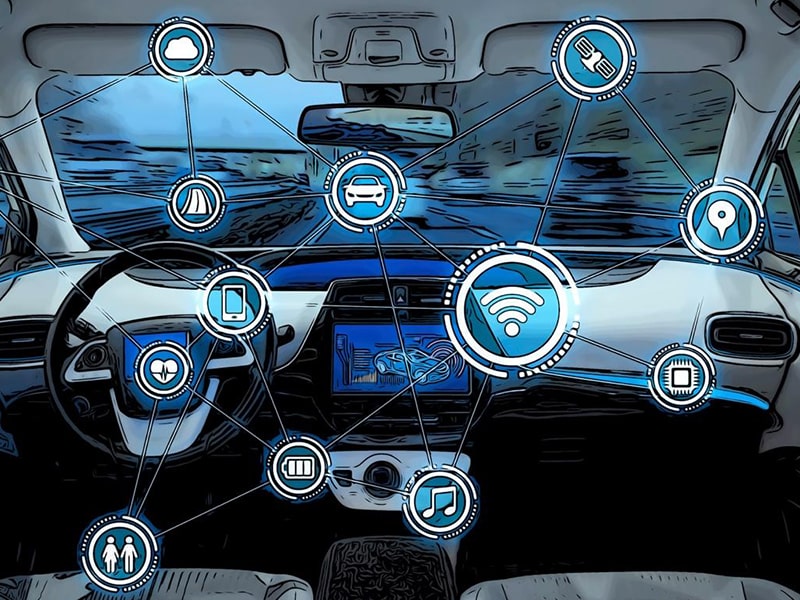
Profits are what all automakers want. They can’t be negative unless there are unintended consequences, but this is what we’re seeing with the majority of the German automakers right now. Optimizing short-term profit, only to lose the important volume segment long-term. This article explains why short-term management greed continues to accelerate the downturn of the German auto industry.

The Audi CEO, Duessmann, said in an interview in February 2022:
“We have realigned Audi as a premium brand. We will limit our model range at the bottom and expand it at the top. In the Group, we try to secure the overall result. That’s why we prioritize models with higher profits. Specifically, we have decided not to build the A1 anymore, and there will be no successor model of the Q2 either.
The BMW CFO Nicolas Peter expressed it like this:
“The goal is to generate more earnings per vehicle”.
In other words, premium and high margin models will be sold and all others are discontinued. The i3 is a good example of a small, affordable, good and popular BEV which the BMW group will stop selling in July 2022. However, there is no successor currently planned for the same price range.
Today, affordable entry models are terminated in a time when low-cost Asian manufacturers start to sell BEVs in that segment in Europe.
Premium models sold with higher margins and profit per vehicle are getting priority within the Volkswagen Group, Mercedes-Benz, and BMW because semiconductor and other part supply limitations will not satisfy the demand in all segments. This allocation strategy makes financial sense for the companies making higher profits with premium models; it’s only fair that customers who pay more are able to get their cars sooner whilst consumers who pay less, wait.
This strategy makes total business sense for short-term profits but it doesn’t in the long run, especially during the industry shift from ICE to BEVs.
The small and mid-size vehicle market is shrinking rapidly in unit sales since 2019 – an alarming sign for the future because once a vehicle segment loses to the competition, regrowth is not an easy feat, especially in a time where BEVs and software dominate technology.
The Volkswagen Group can be divided into volume brands (e.g. Volkswagen, Skoda, Seat, Cupra), and premium brands (e.g. Audi, Porsche), both groups together making one of the largest automotive businesses in the world, second to Toyota. Not long ago, the Volkswagen Group overtook Toyota with almost 11 Million vehicles sold globally but within a few years they shrunk to below 9 Million units in 2021, that negative trend now continues. One reason for this erosion is that limited semiconductor supply was prioritized to the premium high margin vehicles from Porsche and Audi, while Skoda, Volkswagen, and Seat customers had to wait as the demand could not be satisfied. In that respect the statement from VW that the demand is strong is correct, but customers don’t wait endlessly – they simply can’t.
Under normal market conditions, waiting customers would simply get their vehicle later when the supply chain shortages ease again. But these are not normal market conditions. The industry is undergoing a transformation from ICE to BEV, something never seen before: the rules of the past don’t apply to the future.
About 50% of all new vehicle demand is triggered by ‘the old car is broken and can’t be used anymore’ more commonly known as a replacement. These customers urgently need a car, to do their business and manage their daily lives, and don’t have the luxury to simply wait or use a second or third vehicle from their garage. They must buy a car and if it isn’t available in their preferred ICE brand they may turn to a new BEV brand.
In the accelerating transformation to electric vehicles we are in, every day that is passing by people are more attracted to BEVs, as there are more BEV models to choose from, and would reconsider if a car with a combustion engine is still a good choice or if it’s better to switch to BEVs now. The Volkswagen Group is forcing the consumer’s hand by limiting small and mid-size car supply to reconsider their brand loyalty. Many of those who wait will decide for an affordable low-cost BEV from a brand that can deliver. With more attractive and affordable Asian and American BEVs available in the mid and low-cost segment, more buyers decide every day against a car from their preferred German brand simply because their VW-Group ICE or BEV has a delivery date far in the future but they need a car now and don’t have the budget for a premium car.
In that respect, the Volkswagen Group and other German Automakers are correct with their statement that they have a lot of demand, but because they can’t deliver they are shrinking in unit sales while presenting great profits with premium high margin vehicles. That is good for earnings, bonuses, and dividends, but is it good for the companies and their employees in the long term?
The difference between top managers and founders is that the first tend to satisfy their short-term profit and greed while the latter thinks in decades and not years. Most founders do not like capital markets, their reporting requirements, and the media because long-term success often means short-term compromises or even losses.
Managers tend to manage but founders tend to lead. It is almost impossible to manage a company in a technology transformation but a harder requirement to lead. A manager will tell his team how to use technology best to cut a path in a forest but a leader tells his team that they are in the wrong forest. If you create a list and differentiate all automaker CEOs into leaders and managers you will find very few leaders because almost all belong to the management group.
Most managers tend to manage the current situation they are in, and the long-term consequences don’t bother them because they are gone when things go wrong anyway. If you make another list where all the CEOs of automakers are ranked by years in their position, you will easily distinguish the executives with a long-term time horizon and strategy from all the others who are short-term optimizers or just managers. Managers cannot implement a long-term strategy like leaders because their organization’s bonus and malus system would require them to forgo benefits and recognition, so they do what they are paid to do and that is executing tactics. It is a tactic, not a strategy, to favor high margin sales over low margin, low-revenue sales in a time of a transformation from ICE to BEVs.
The serious problem with this strategy is that consumers who are loyal to their legacy brand are almost forced to buy a BEV from a new BEV brand, and once they do, they like it and may never come back. Many who choose a BEV for the first time will choose the new brand more carefully than they would with an internal combustion engine when the market was clearly defined and transparent. Consumers knew what to expect from an internal combustion engine brand in the past, but that is no longer true in the world of BEVs.
The software advantage that American and Asian automakers have over German manufacturers is a new experience and learning curve that is unexpected for most. Software expertise was never in the DNA of legacy automakers and is not easily developed. Whether it’s charging, navigation, infotainment or over-the-air software that is updated for free to improve all elements of your BEV, good software requires an organization built around it, but legacy auto has built their organizations around the hardware.
Even worse, with the much longer lifespan of a BEV consumers won’t be looking soon for another electric vehicle too, which is another issue for the legacy automaker who have a business model that requires people to buy a new car every 2-4 years. Without that recurring revenue from new cars, legacy auto companies must search for new revenue streams and the only one with potential is software upgrades. The issue with that approach is that other BEV manufacturers offer most if not even all OTA software updated for free already and making a business model for legacy automakers in that field questionable.
While legacy automakers claim they will make more sales and profit with BEVs, the truth is they will make less because the recurring revenue timeframe for new vehicles bought is larger. They also lack the necessary software expertise and skills to monetize it, and in a future with robotaxis, many will not buy a car at all, but will rent an autonomous vehicle that will drive them from home to their destination and back for a fraction of the cost per mile. To offer such an autonomous service, one would need fully autonomous vehicles driving on all roads without exception, but German automakers focus on limited geographically defined areas or highways, making the use case worthless for 90% of consumers. If one day autonomous technology providers like Waymo, Mobileye, or Tesla license their robotaxi software to automakers, the majority of profits will go into their pockets.
The highly profitable spare part business is an area where legacy car manufacturers will suffer the most in the BEV world because BEVs don’t need most of the maintenance ICE vehicles do, whether it’s a new exhaust or an oil change. The loss of revenue and, more importantly, decades of guaranteed revenue and profits is another major problem and impossible to compensate for. The huge fleet of internal combustion engines on our roads, totaling nearly 2 billion vehicles, will shrink faster than most expect due to the total cost of ownership, and with it a reliable source of revenue and profit for the incumbent automakers and their ecosystem. The pace of change is accelerating, and with each passing day, the pressure to abandon the internal combustion engine car is greater than the day before.
Dealers should switch to BEVs as soon as possible, but the legacy automakers won’t allow them to do so. Larger dealerships that sell more than 1,000 VW vehicles a year only get an allocation of 35 ID.3s and 50 ID.4s for the entire year and no more. Far fewer of the smaller ID.3s are available, instead there are more of the higher-priced ID.4s. The popular e-UP! previously discontinued is back on sale, but only with 10,000 units. The e-Golf has been discontinued with no successor. Production of the popular BMW i3 will cease in July 2022 without a successor. Most small or midsize affordable German BEVs for the average household are sold in limited numbers, discontinued, and have no successor. Consumers with brand loyalty are forced to switch to a higher-priced premium vehicle or wait.
The legacy automakers’ strategy is increasing the cost for the average household to drive a car, and with the high likelihood that ride-hailing and robotaxis will be operational in a few years, with some already operating in some cities at an 80% cost per mile reduction, the attraction for people to not buy a car at all is strong.
Another overlooked aspect is that people buy small and cheaper cars when they are young and cannot afford what they truly want. They get used to the chosen brand and with a better salary over the years they upgrade to mid-class and later premium cars sticking usually to the same brand. If you don’t get used to the German brand in your early years, you are less likely to switch later to it. Without good and affordable BEVs for the younger generation, German automakers won’t plant a seed for the coming decades, and without seed, there is no harvest.
The Volkswagen Group and German brands’ volume segments will continue to shrink and may be forced to consolidate in the next few years as consumers turn to competitors’ BEVs while sales of internal combustion engines slump. VW management hopes that the Trinity and Artemis projects, which will be launched in 2025 and 2026, will bring about the needed change, but these new BEVs will also be expensive, and consumer erosion will not only continue but accelerate over the next few years. BMW and Mercedes will continue to sell expensive high-margin vehicles but lose the volume segment to competitors and consumers who won’t come back once they experience Asian and US lower cost and better software BEVs.
The bonus and malus system of the top managers of the German automakers are causing them to abandon the important high-volume segment and once customers leave their beloved brand, they will not come back easily. As a result, German automakers will continue to shrink, and although they can claim to be shrinking profitably, they will be small manufacturers in the future and vulnerable to takeovers, buyouts, mergers and IPOs.
German Automakers not offering affordable small models is not in the interest of employees, customers, or the economy but top manager’s greed.
About the author
Alex Voigt has been a supporter of the mission to transform the world to sustainable carbon free energy and transportation for 40 years. As an engineer, he is fascinated about the ability of humankind to develop a better future via the use of technology. As a German, he is sometimes frustrated about the German automotive industry and its slow progress with battery electric vehicles which is why he started to publish in English and German. With 30 years of experience in the stock market, he is invested in Tesla [TSLA], as well as some other tech companies, for the long term.











